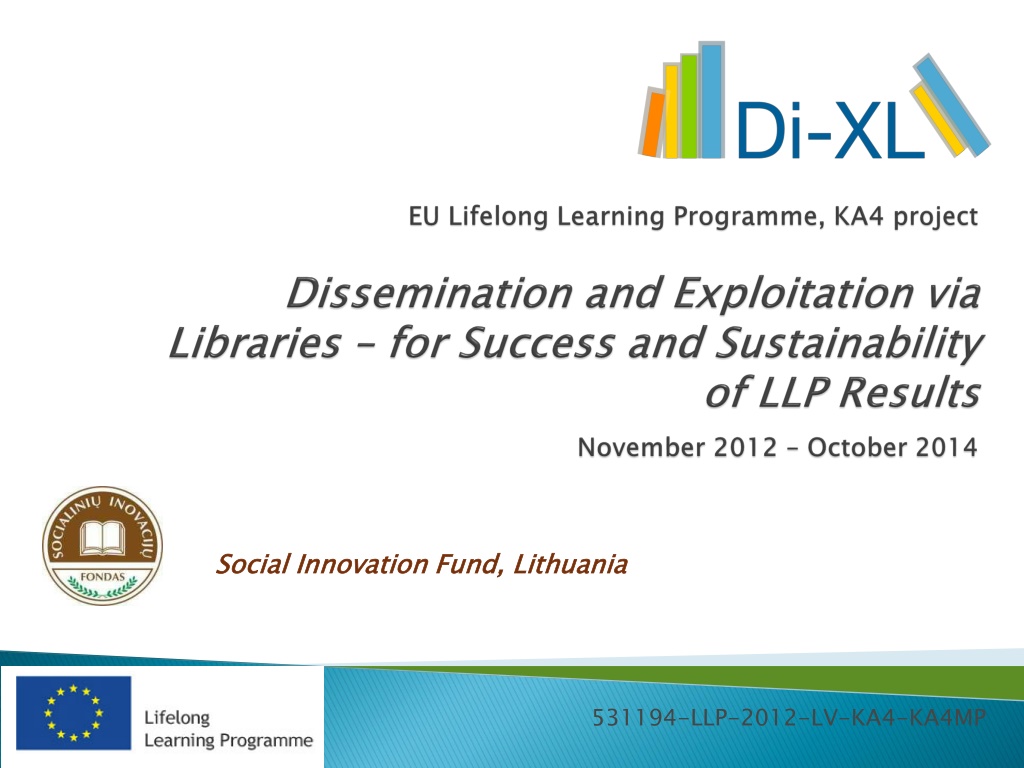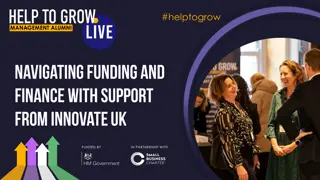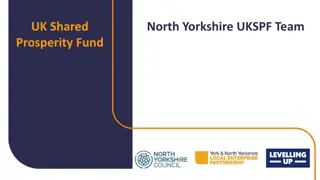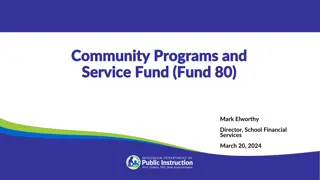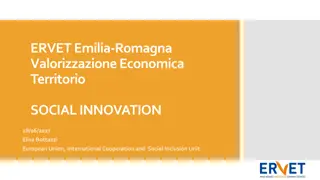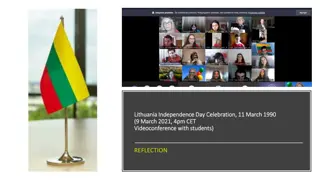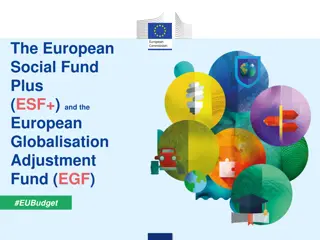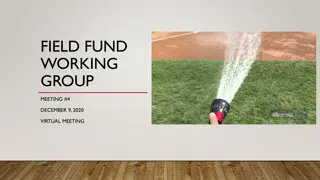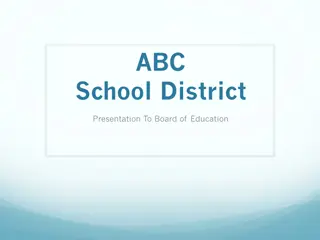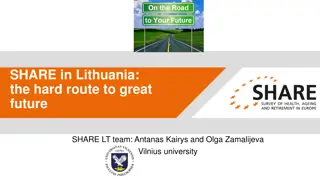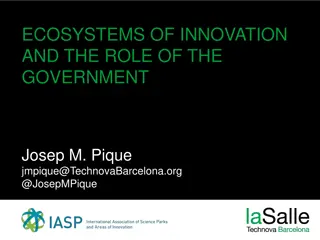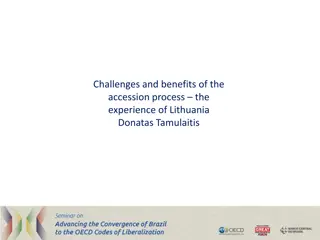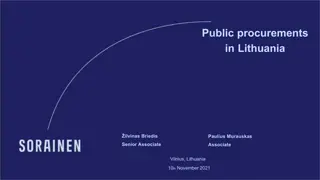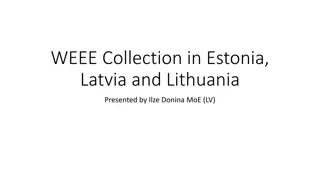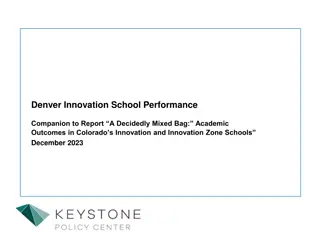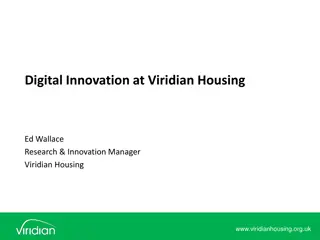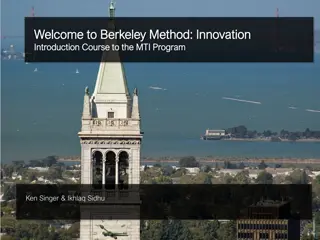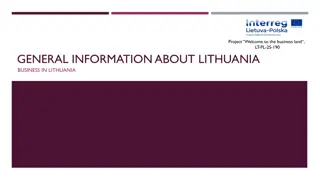Social Innovation Fund in Lithuania
"The Lithuania Social Innovation Fund project aims to foster social innovation and community development in Lithuania through targeted programs and initiatives. By supporting local initiatives and fostering collaboration, the project seeks to create a positive impact on society and address relevant social challenges. Through strategic investments and partnerships, the fund aims to empower communities and drive meaningful change across various sectors."
Download Presentation

Please find below an Image/Link to download the presentation.
The content on the website is provided AS IS for your information and personal use only. It may not be sold, licensed, or shared on other websites without obtaining consent from the author.If you encounter any issues during the download, it is possible that the publisher has removed the file from their server.
You are allowed to download the files provided on this website for personal or commercial use, subject to the condition that they are used lawfully. All files are the property of their respective owners.
The content on the website is provided AS IS for your information and personal use only. It may not be sold, licensed, or shared on other websites without obtaining consent from the author.
E N D
Presentation Transcript
Social Innovation Fund, Lithuania Social Innovation Fund, Lithuania 531194-LLP-2012-LV-KA4-KA4MP
As the flagship European Funding programme in the field of education and training, the Lifelong Learning Programme (LLP) enables individuals at all stages of their lives to pursue stimulating learning opportunities across Europe. It is an umbrella programme integrating various educational and training initiatives. LLP is divided in four sectorial sub programmes and four so called 'transversal' programmes. The Education, Audiovisual and Culture Agency Executive Agency (EACEA) is responsible for the management of certain parts of the Lifelong learning programme under supervision from its parent Directorate-General for Education and Culture (DG EAC).
The sectorial sub programmes education and training and continuing previous programmes: sectorial sub programmes focus on different stages of Comenius for schools Erasmus for higher education Leonardo da Vinci for vocational education and training Grundtvig for adult education
The transversal sub programmes and to ensure that they achieve the best results possible. They aim to promote European cooperation in fields covering two or more of the sub-programmes. In addition they seek to promote quality and transparency of Member States' education and training systems. Four key activities focus on: Policy cooperation and innovation Languages Information and communication technologies - ICT Dissemination and exploitation of results transversal programmes programmes aim to complement the sectorial Four key activities focus on:
The Jean Monnet addition to the sectorial and transversal programmes, The Jean Monnet programme stimulates teaching, reflection and debate on the European integration process at higher education institutions. Eurydice processing and circulating reliable and readily comparable information on education systems and policies throughout Europe. Although it forms part of the LLP transversal programmes, Eurydice does not provide financial support or fund projects. Eurydice is a Network consisting of a European Unit and National Units. The European Units are funded by the European Commission, while the National Units are funded by the governments that establish them. They may also receive financial support from the European Commission. Jean Monnet programme also falls under the LLP umbrella, in Eurydice is an institutional network for gathering, monitoring,
Each LLP project has few main life stages: Management Development Evaluation/quality assurance Valorization= dissemination and exploitation 'Valorisation' is the French equivalent term for 'dissemination and exploitation of results'. The two terms are sometimes used interchangeably in English in the context of the EU Lifelong Learning Programme and its predecessors.
What is the rationale for the dissemination and exploitation of results? Systematic dissemination and exploitation of results are crutial helping to maximise the impact What is the rationale for the dissemination and exploitation of results? the impact of activities undertaken within the project. Benefits Benefits of the effective valorisation strategy are the followings: improving the sustainability of project results generating savings by exploiting existing practices (means no re the wheel ) transferring r enhancing the impact of EU-funded programmes and projects at systems level reducing time feeding the policy process (peer learning, Open Method of Coordination sustainability of project results, in line with end-user needs no re- -inventing inventing the wheel ) transferring results in order to transform systems and practices, thus reducing time- -scales scales for policy and process innovation peer learning, Open Method of Coordination)
'Dissemination and exploitation of results' refers to activities designed to ensure that the results of the LLP are appropriately recognised, demonstrated and implemented on a wide scale. Within the context of the LLP, the following distinctions should be observed: Dissemination: disseminate disseminating your project results is all about: spreading them far and wide. This is defined as a planned process of providing information of the results of the Project to key actors. It occurs as and when the results of the Project become available Dissemination: Derived from the Latin for "abroad" (dis) and "seed" (semin), to disseminate simply means to spread widely to spread widely . And that is precisely what become available. Within Di-XL Project we would like to promote the libraries as one of the important key actor for dissemination at NATIONAL level.
Exploitation transferring the successful results of the Project to appropriate decision-makers in local, regional, national or European level. Multiplication is the planned process of convincing apply the results of the Project. Exploitation consists of 'mainstreaming mainstreaming' and 'multiplication multiplication'. 'Mainstreaming' is the planned process of convincing individual end-users to adopt and/or The exploitation is mainly the task of the project s partners, however, libraries could become a valuable partners in the exploitations stage too. 'Dissemination' and 'exploitation' are therefore distinct concepts, but closely related to one another. The keys to a successful exploitation of results are: producing relevant results ultimately society more generally; producing relevant results from projects to satisfy the demands of providers, policy-makers and ensuring, through the use of effective dissemination and exploitation, that such results reach the right target audiences reach the right target audiences in a format and at a time which enables them to benefit from them. Within the Di-XL project the partners are working on the methodology to make the Libraries one of the main successful key factors for dissemination and exploitation.
The dissemination toolkit is a large one. The mechanisms available to spread the output of a project are numerous. The most popular are printed materials, DVD Print publications the project managers keep a mailing list containing a list of recipients who are interested in the project, such as policy-makers, civil society organisations, sectorial bodies, educational institutions, academics and students. printed materials, DVD and web DVD are a popular dissemination tool. Most of mailing list both postal and electronic web- -sites. sites. Print publications and DVD Within Di-XL project we try to find out the way of making the printed materials and DVD easier-accessible for the customers in the libraries. In this case each printed material and DVD have to have the ISBN number.
Websites audience and promoting your project. Project managers use their websites to provide information activities and finally results Websites of the projects are powerful tools for reaching your target information about the project and news results. news of its With billions of webpages floating around in cyberspace, one of the main challenges for dissemination of the projects websites is ensuring that they are visited by the target audience. This means that, although websites are dissemination tools, it is not just enough simply to put them on be actively promoted and publicised. With billions of webpages floating around in cyberspace, one of the main challenges for dissemination of the projects results via websites is ensuring that they are visited by the target audience. This means that, although websites are dissemination tools, it is not just enough simply to put them on- -line, but they also need to be actively promoted and publicised. results via line, but they also need to Within Di-XL project we suggest to disseminate the projects websites via libraries by making the banners with the databases of the LLP projects titles and their web-sites available in the first page of the library web-site
